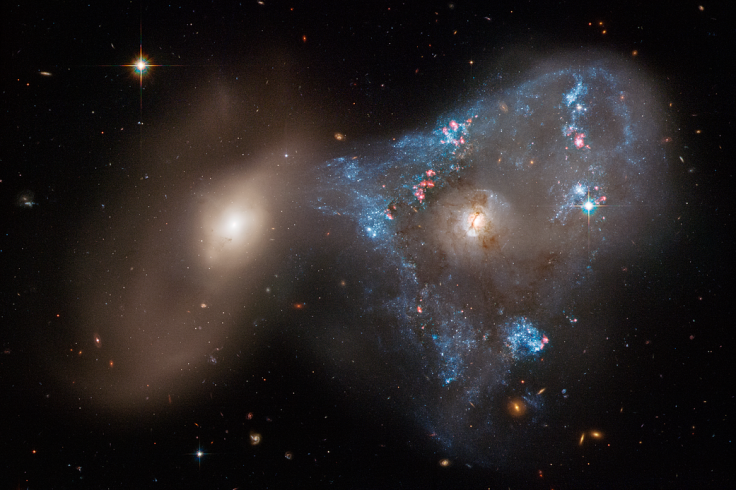The outer space has given scientists much to discover and research on ever since man realized it was possible to do so. Since then, there have been many discoveries made about many space objects and even of the other galaxies that are not the Milky Way.
The Hubble Space Telescope, which is now more than 30 years old, has been instrumental in helping researchers learn more about galaxies. Aside from that, it has given everyone awe-inspiring photos to marvel at that give us an idea of how things look like in space.
So if you have ever wondered what two galaxies colliding with each other looks like, the Hubble actually has got you covered thanks to a photo it has previously snapped of the two galaxies of Arp 143 colliding with one another.
Hubble Space Telescope's Photo of Two Colliding Galaxies

The photo you see above is "A spectacular head-on collision between two galaxies fueled the unusual triangular-shaped star-birthing frenzy," according to the National Aeronautics and Space Administration (NASA).
The more glittery spiral galaxy on the right is the NGC 2445 while the one on the left is the NGC 2444. Collectively, they are known as Arp 143.
NASA says that the NGC 2445 is "awash in childbirth," meaning it is rich in gas and actually in the middle of forming new stars as it struggles to escape the gravitational pull of NGC 2444.
"The pair is waging a cosmic tug-of-war, which NGC 2444 appears to be winning," says NASA in its post on its official website.
Speaking of the stars that is forming within NGC 2445, the space agency says that the stars forming nearer the center are actually around one to two million years old only. The sections in blue seen in the photo are groupings of stars, according to NASA. The pink ones are star clusters that are young as well.
Related Article: #SpaceSnap: Hubble Space Telescope's Photo of Mystic Mountain That Looks Like It Belongs in Middle Earth
The Hubble Space Telescope
As previously mentioned, the Hubble Space Telescope is now more than 30 years. To be specific, it has now been 32 years since it was launched to low orbit.
Named after astronomer Edwin Hubble, the space telescope is actually the first major optical telescope that has been launched to space, according to NASA. It is around 13.3 meters long, which NASA says is the same length as a school bus.
Ever since its launch in 1990, the Hubble has already made more than one million observations while in space and is still additing to that number as of press time. It is orbiting our planet at around 17,000 mph but it still manages to take brilliant photos of stars, galaxies, and more.
The Hubble is said to transmit around 10 terabytes of new data every year. If you want to look at it on a weekly rate, NASA says it transmits around 150 gigabits of data every week.









